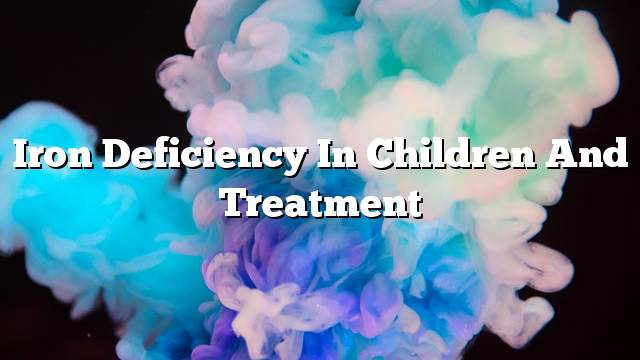Iron
The iron component is an important component of the child’s mental and physical development. It enters the hemoglobin structure and helps build red blood cells, which in turn transport oxygen to the organs to carry out daily vital functions. The child may have iron deficiency for various reasons Which affects the child’s growth rate, and reduces the level of intelligence of the child.
The normal level of iron in children ranges from 50 to 120 micrograms per 100 ml of blood. Iron deficiency symptoms should be noted early; iron deficiency can lead to anemia.
Causes of iron deficiency in children
- A non-integrated diet, where the child does not eat foods rich in iron, and children who eat milk cow is much more prone to iron deficiency, as the work of calcium to reduce the absorption of the stomach to iron.
- Bad absorption of iron in the body which can result from diseases in the intestine or due to gastrointestinal surgery.
- Increased need for iron due to the rapid growth of the baby’s body.
Symptoms of iron deficiency
- Paleness in skin color.
- General weakness, and loss of appetite.
- Shortness of breath.
- Accelerating and irregular heartbeat.
- Increase the child’s desire to eat certain foods such as snow, starch or soil.
- Extreme fatigue, where the child is unable to play as usual.
- Headache.
Treatment of iron deficiency
When a child is diagnosed with iron deficiency, the doctor usually describes iron-fortified supplements, which are usually in the form of a syrup to facilitate their ingestion, and can be added to orange juice until they become palatable. , And the child should be provided with a healthy diet to compensate for the lack of iron, and steps to be taken to increase the level of iron:
- Give the baby foods rich in iron, duo, such as red and white meat, fish and egg yolk.
- Introducing the triple iron sources of the child’s daily diet, which is found in vegetable foods such as legumes (lentils, beans and beans), broccoli, tomatoes and spinach leaves.
- Give your child a cup of natural orange juice with meals, as vitamin C in orange helps increase the body’s absorption of iron.
- Cook the potatoes with their husks and serve them to the child, where potato husks contain a good proportion of the iron element.
- Give the child raisins or dried fruits as an alternative to unhealthy snacks, as raisins are considered to be rich sources of iron.
- Provide the child with fortified foods, such as fortified milk and breakfast cereals.
